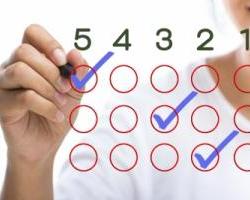How to Use the Eating Attitudes Test to Detect Anorexia
 As a tool for detecting eating disorders, the Eating Attitudes Test (EAT) is one of the most widely used assessments given by metal health professionals to their patients.
As a tool for detecting eating disorders, the Eating Attitudes Test (EAT) is one of the most widely used assessments given by metal health professionals to their patients.
The test was published in 1979 and has since been a benchmark for the identification of high-risk behavior in both clinical and non-clinical settings.
While the results of the test don’t indicate a specific diagnosis, they can help counselors, therapists or school officials know if a person should be referred to a specialist.
Taking the test
The EAT can be easily taken online by anyone. There are two versions of the test available: the first is the EAT-26 and the second is the EAT-40 – the latter is the original version that has since been shortened to the 26-item test.
Both tests shouldn’t take more than a few minutes to complete, and your results can be scored right away.
Interpreting your results
The results from three areas of the test are used to determine risk: your total score based on the answers, your answers related to disordered-eating symptoms and weight loss and your individual body mass index which is determined by your height and weight.
In general, people who score 20 or higher are given a recommendation to see a mental health professional who specializes in eating disorders. However, a lower score does not necessarily indicate that you shouldn’t seek help if you feel you are suffering from a serious problem.
Depending on the type of disordered eating habits you are experiencing, your EAT score may fluctuate.
While the EAT can be a useful screening tool, your results on the test are best interpreted by a trained professional or counselor. It can, however, be helpful in assessing risk in vulnerable individuals or populations.
Source: EAT 26
Image courtesy of patpitchaya/FreeDigitalPhotos.net
 Eating Disorder Self Test. Take the EAT-26 self test to see if you might have eating disorder symptoms that might require professional evaluation. All answers are confidential.
Eating Disorder Self Test. Take the EAT-26 self test to see if you might have eating disorder symptoms that might require professional evaluation. All answers are confidential.